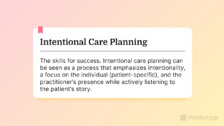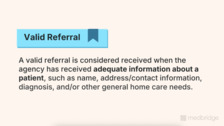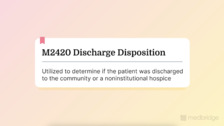Success in Home Health Star Ratings: Improving Quality of Patient Care
Presented by Tina Marrelli and Kim Corral
12-Month Subscription
Unlimited access to:
- Thousands of CE Courses
- Patient Education
- Home Exercise Program
- And more
Improving Quality of Patient Care (QoPC) Star Ratings is a vital priority for home health organizations striving to enhance patient outcomes, ensure regulatory compliance, and remain competitive in today’s healthcare landscape. This course builds on foundational knowledge by offering actionable strategies and an in-depth exploration of the Quality of Patient Care measures used in the CMS Home Health Star Ratings program. Through real-world clinical examples, such as the scenario of Mrs. Arnez, clinicians learn how to implement intentional care planning, improve OASIS accuracy, and align care delivery with measurable quality indicators. This course is essential for healthcare providers across disciplines—including nursing, physical therapy, occupational therapy, and speech-language pathology—working in home health settings. Learners will gain practical tools and guidance to elevate care, reduce hospitalizations, and contribute meaningfully to improved star ratings at both the patient and organizational levels.
Learning Objectives
- Recognize opportunities to improve Quality of Patient Care (QoPC) Star Ratings
- Identify individualized patient care planning practices for improved QoPC Star Ratings
- Define intentional care planning in practice
- Name the key elements of intentional care planning
- List five strategies for successfully improving QoPC Star Ratings
Meet your instructors

Tina Marrelli
Tina Marrelli is the president of Marrelli and Associates, Inc., a publishing and consulting firm working in home care for more than 30 years. Tina is the author of 13 books, including the Handbook of Home Health Standards: Quality, Documentation, and Reimbursement (6th edition, 2018). Other books include A Guide…

Kim Corral
Kim is a registered nurse with a master’s degree in education and more than 30 years of home health experience. She is an experienced leader in home healthcare, having held both clinical and operational positions at regional and national levels for large corporate home health organizations. She brings a passion for providing…
Chapters & learning objectives

1. Implementing Intentional Care Planning to Support Star Ratings Improvement
This chapter introduces the concept of intentional care planning as a foundational strategy for improving QoPC Star Ratings. By integrating patient-specific assessments with holistic, proactive care plans, clinicians can better support patient outcomes while reinforcing their agency’s quality metrics.

2. Strategies for Improving Timely Initiation of Care
This chapter focuses on timely initiation of care—a critical process measure—and outlines strategies to enhance scheduling, communication, and OASIS data accuracy. Clinicians will learn how operational, interdisciplinary coordination, as well as other insights, can lead to measurable improvements in this star rating component.

3. Strategies for Improving the Five Outcome-Based QoPC Measures
This chapter delves into the five outcome measures that directly influence QoPC Star Ratings: ambulation, bed transferring, bathing, dyspnea, and management of oral medications. It provides detailed OASIS guidance, assessment recommendations, and care planning strategies to help clinicians promote functional gains and symptom control.

4. Strategies for Improving the Potentially Preventable Hospitalization Measure
This chapter addresses the claims-based hospitalization measure, emphasizing strategies for identifying high-risk patients. These strategies include front-loading visits, implementing disease management protocols, and enhancing team communication. They highlight how intentional care delivery can reduce hospital readmissions while supporting higher quality ratings.
More courses in this series

Success in Home Health Star Ratings: An Overview
Kim Corral and Tina Marrelli

Success in Home Health Star Ratings: Key Measures
Kim Corral and Tina Marrelli

Success in Home Health Star Ratings: Improving Quality of Patient Care
Kim Corral and Tina Marrelli

Success in Home Health Star Ratings: Improving the Patient Survey (HHCAHPS)
Kim Corral and Tina Marrelli

Success in Home Health Star Ratings: Data Strategies
Kim Corral and Tina Marrelli